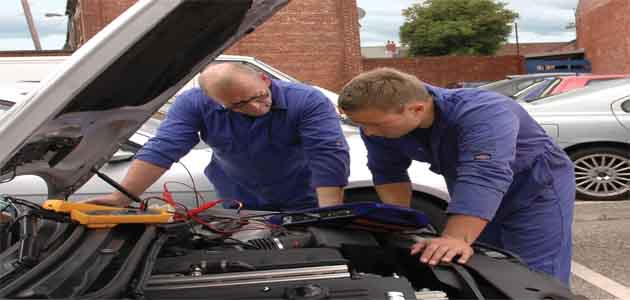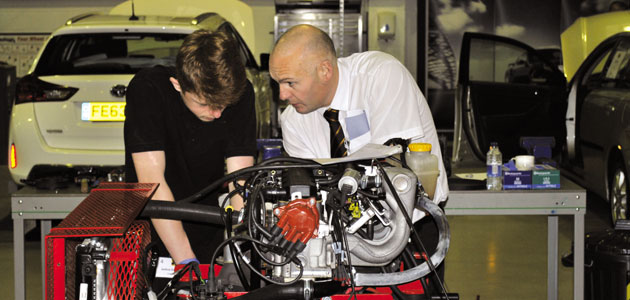
With the latest horse meat scandal dominating the headlines, fingers have been pointed in the direction of suppliers. The public is justifiably demanding that heads should roll, but the whole issue poses the bigger question of who really is to blame. The suppliers? The retailers? The end user?
I’m not suggesting for a second that the public is solely at fault here, as they were sold the product on the pretence that it was something that it clearly was not, but I can’t help but think that when you pay £1.50 for a ready meal, surely you’re not going to expect premium quality. You’d struggle to go out and buy the ingredients alone without even considering preparation, packaging and distribution.
If you look at our own industry there are some real similarities occurring at the moment. Consumers are demanding cheaper car maintenance and sadly there are cases where aftermarket garages, and even main dealers, are buckling to the overwhelming pressure of this demand to cut motoring costs, and general maintenance in particular.
This is commonly disguised in the form of extended service intervals (long life servicing) or tempting service packages when buying the car new. With these price cuts and offers for motorists rife, what does this mean for the end product and how does it affect you? The majority of PMM’s readers are no doubt motor enthusiasts and I ask you, would you seriously consider leaving oil change intervals for 15,00020,000 miles, even if the manufacturer advised you it was safe to do so?

Frank Massey (left)
Food for thought
Recently we were paid a visit by a genuine ‘tier 1’ component manufacturer. This company, in its respective component field, has many product lines and references that are fitted as ‘OE’ to the vehicle when it is assembled. The purpose of the trip to see us was in the name of researching the perception and knowledge at garage level of this company’s particular area of parts specialism, and to look at the differences in products that are advertised and sold as ‘OE matching’ quality.
To help facilitate this, a sample of various components (from differing suppliers) was disassembled so that a complete examination of the internal parts could be carried out and, more importantly, compared with the genuine original specification parts (those that the presenting company supplies to VMs as OE).
The reason this particular parts area was chosen is that it is notoriously easy to hide any shortcomings in the manufacture of the component as they’re often not visibly recognisable externally. We’ve seen a lot of parts over the years, but what we were presented actually shocked us and, more critically, has led us to question the trust that we’ve placed in certain brands.
You’ll have to witness the presentation yourself to know what we’re talking about, but in short we’ve been left to conclude that the independent aftermarket, on occasions, is being duped.
Misrepresentation of sub-standard components, compared with the genuine item, threatens your business and your reputation, and if this is not challenged then the general public’s confidence in our trade could be seriously damaged, just in the same way the food industry is experiencing at the moment.
At what price?
We’d be lying if we tried to claim that price was of little importance to us all, but in my view there is a line you have to draw. The first thing to suffer when price drops, inevitably, is quality and a small price advantage in no way makes up for substandard quality.
The sad truth is that the aforementioned consumer demands have meant that cheaper alternative brands (often from overseas) have flooded the market. Often the true location of manufacturing isn’t disclosed and these lowbudget parts, some of which fall drastically short of VM standards, pose a huge threat to the longevity and safety of the vehicle.
Please do not think that I am referring to fit-for-purpose parts either, as I fully agree with the principle of offering a choice and a cheaper alternative, just as long as strict and transparent rules are adhered to and all areas of the supply chain get what they’re paying for.
Who’s responsibility?
So who is to blame? I think largely the companies who manufacture the components need to take the lion’s share of the responsibility and part manufacturers should be forced to transparently advertise their products as exactly what’s in the box. This could be on a scale system that enables the buyer to identify the product quality – whether it is genuine matching OE or an ‘aftermarket’ alternative. Either way, at least when in full possession of the facts, the consumer can make an informed decision.
Another fact that amazed me was the cost saving techniques employed in the cheaper manufacture and importation of products, often at a cost of a few pence per item. On an industrial scale this could obviously save millions for manufacturers, but who’s really losing out at the end of the day? In my own case, I’ve been left thinking whether it is really worth jeopardising safety and the manufacturer warranty, all in the name of saving a few pence/pounds!
It turns out the sale of horse meat has risen by 400% since the scandal was uncovered, proving that some people don’t mind eating horse just as long as it isn’t being advertised and sold as beef. Given the facts and the choice, my preference would be to elect to pay a premium, especially if I was certain of getting better quality or, at the very least, what’s being advertised on the label.
The case of diesels
As an engine management and specialist diesel repairer we’re seeing a high failure rate on Diesel Particulate Filters, turbo chargers and EGR valves. Many of you that have serviced a modern diesel (manufactured after 2005) will have experienced or heard of problems with the DPF and this can prove very costly as OEM dealers reserve the right to refuse warranty repairs on such items due to incorrect driving style and/or improper servicing. This problem is multiplied by a combination of lesser quality fuels, long life servicing/incorrect oil lubricants and poor drivability.
I’ve witnessed cheap servicing being offered by some independent garages in our area and these are cheaper than what I can actually go out and buy the correct parts/oil for, before labour charges even come into the equation, so I can’t help but wonder what parts are being used to do this. I know times are difficult but I’d rather shut my doors altogether than offer cut-price servicing by sourcing cheap products and cutting corners in my work.
In my opinion I think it is better to charge a fair and appropriate amount of money to do the job right in the first place, offering excellent value for money and enabling us to protect the customer’s warranty should something go wrong.
So the next time the customer rings you for a service quote ask them what it is that they want; is at: a) cheap price or b) good quality, because in my experience you’ll rarely find the two together.
Both the garages and the consumer are entitled to ask where parts are manufactured, along with the validation and type approval certificate from the manufacturer. It may appear initially to cost more for a service, but if the price of repairs is spread out during the time the customer owns the vehicle then they’ll likely save hundreds on unnecessary repairs that can so easily be avoided.









